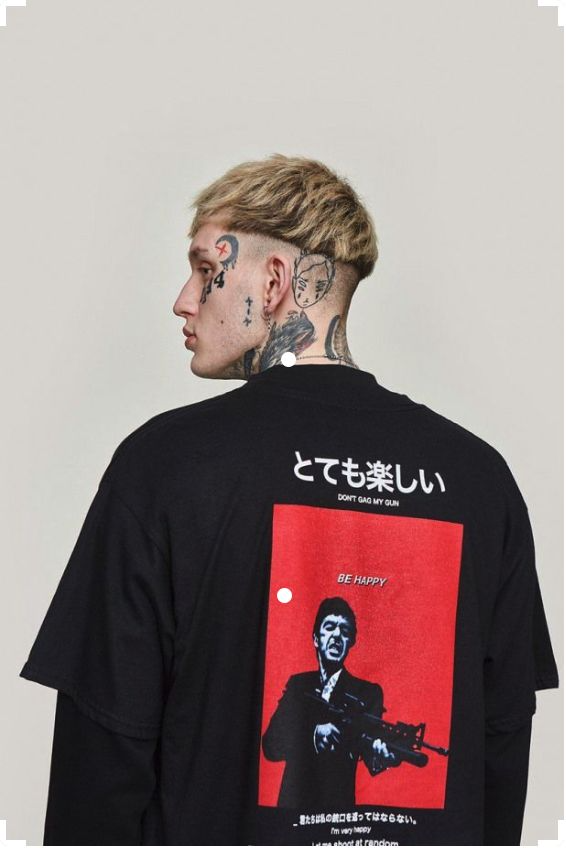Currently Empty: $0.00

Introduction: The Humble Beginnings of a Global Phenomenon
The T-shirt, a simple and often overlooked garment, has evolved from an undergarment worn by soldiers into one of the most versatile and ubiquitous pieces of clothing in the world. Today, the T-shirt is not only a basic wardrobe essential but also a medium for personal expression, a platform for political statements, and a powerful symbol of various cultural movements. Its journey from a functional piece of clothing to a global icon reflects the changes in society, fashion, and technology. In this essay, we will explore the history of the T-shirt, its design evolution, its cultural significance, its role in fashion, its environmental impact, and the future of the T-shirt in an increasingly sustainable world.
The journey of the T-shirt is as multifaceted as the garment itself. From its use as military wear to its status as a pop culture icon, the T-shirt has played an important role in shaping global fashion trends and social movements. What makes the T-shirt so unique is not just its widespread use but its ability to serve as a personal canvas, allowing individuals to express themselves in ways that other forms of clothing simply cannot. This ability to blend fashion, art, identity, and ideology is what has made the T-shirt an enduring and significant garment in the global fashion landscape.
The Origins of the T-Shirt: From Underwear to Outerwear
The first T-shirts were not designed as fashion statements but as functional undergarments. The T-shirt, as we know it today, originated in the early 20th century when it was used by the U.S. military as an undershirt. The simplicity of the design—short sleeves and a crew neckline—made it a practical and comfortable garment for soldiers during World War I. These early T-shirts were made from cotton, which was lightweight and breathable, offering soldiers relief from the heat and physical discomfort of wearing heavy uniforms.
After World War II, T-shirts began to make their way into mainstream civilian life. They were no longer seen exclusively as undergarments but started to be worn as outerwear. The T-shirt became a symbol of casual wear, thanks in large part to the influence of Hollywood. In the 1950s, famous actors like Marlon Brando and James Dean wore T-shirts in iconic films such as A Streetcar Named Desire (1951) and Rebel Without a Cause (1955). These films portrayed young men as rebellious figures, and the T-shirt became associated with this rebellious spirit. Hollywood’s embrace of the T-shirt played a pivotal role in shaping its cultural significance as a symbol of youth, independence, and nonconformity.
By the 1960s, the T-shirt had gained mainstream popularity, particularly among the younger generation, and it was worn not only for comfort but also as a fashion statement. The 1960s also saw the introduction of graphic T-shirts, with slogans, political messages, and images becoming a way for individuals to express their views and interests. The T-shirt became a powerful tool for self-expression and a form of protest, reflecting the cultural shifts and social upheavals of the time.
The Rise of the T-Shirt in Post-War America: Fashion, Rebellion, and Pop Culture
After World War II, the American youth culture experienced a dramatic transformation. With the advent of television and the proliferation of consumer goods, young people had more access to mass media and disposable income. This led to the rise of youth subcultures that embraced non-traditional fashion and lifestyles, and the T-shirt became a key element of their wardrobe.
The T-shirt was embraced by rebellious youth who were rejecting the norms of the older generation. The rise of rock ‘n’ roll, the counterculture movement, and the growing influence of political activism in the 1960s and 1970s meant that the T-shirt was no longer just a casual garment. It became a statement of personal identity, and it was used as a way to protest or express political opinions. For example, during the Civil Rights Movement, T-shirts featuring slogans like “I Am a Man” became symbols of solidarity with the struggle for racial equality.
The 1960s and 1970s also saw the explosion of pop culture as a dominant influence on fashion. Icons like The Beatles, The Rolling Stones, and other rock bands helped popularize band T-shirts, which became a way for fans to show their support for their favorite musical acts. Band T-shirts, often featuring album artwork or logos, became a form of wearable fandom, and T-shirts with pop culture references began to permeate everyday fashion.
The youth-driven rebellion that characterized the 1960s and 1970s would not have been complete without the T-shirt. The garment was no longer just a symbol of comfort; it became an embodiment of personal and cultural identity. The T-shirt had transcended its functional role and became a canvas for artistic expression, political statements, and cultural symbols.
The Evolution of T-Shirt Designs: From Plain to Personalized
As the T-shirt evolved from an undergarment to an outerwear fashion item, its design options became more varied. The introduction of silk-screen printing in the 1960s opened up new possibilities for T-shirt designs, allowing people to wear intricate graphics, logos, and images. This era marked the birth of the graphic T-shirt, and it was during this time that T-shirts began to feature slogans and political messages. The ability to print custom designs on T-shirts made it possible for people to wear their personal views, affiliations, and artistic tastes on their sleeves—quite literally.
The 1980s and 1990s saw an explosion of graphic T-shirt designs, with T-shirts becoming an essential part of fashion for both men and women. Music and pop culture references were particularly popular, and T-shirts became a way to display one’s interests, from favorite bands to iconic movie quotes. The design of the T-shirt became more diverse, with an increasing number of colors, styles, and cuts available to suit different tastes. The rise of screen printing technology made it easy for individuals to create custom T-shirts, leading to a market for personalized clothing. For example, slogans and brand logos became a dominant theme, with companies like Coca-Cola, Nike, and Pepsi producing T-shirts emblazoned with their logos.
At the same time, streetwear culture began to emerge as a major force in fashion. Streetwear brands like Supreme, Stüssy, and A Bathing Ape popularized oversized T-shirts with bold graphic prints, often featuring logos or unique art. These T-shirts became a symbol of urban culture and were worn by young people who identified with street fashion and hip-hop culture. The influence of hip-hop artists, graffiti culture, and skateboarding on fashion helped propel the T-shirt into the mainstream.
As the years progressed, the T-shirt’s evolution continued to be influenced by a growing demand for unique and personalized designs. The customization of T-shirts became more accessible, and online platforms allowed people to create and order their own designs. This further solidified the T-shirt’s role as an essential form of self-expression.
T-Shirts as a Canvas for Personal and Political Expression
Perhaps one of the most fascinating aspects of the T-shirt is its role as a medium for personal and political expression. Throughout the years, people have used T-shirts to express their political beliefs, support for various causes, and individual identities. The ability to print slogans, logos, and graphic images on T-shirts made it a powerful tool for spreading messages and creating awareness.
The 1960s and 1970s were pivotal decades for political activism, and T-shirts were often worn as a form of protest. During the Vietnam War, for example, T-shirts with anti-war slogans became a symbol of resistance and dissent. Similarly, the feminist movement in the 1970s embraced T-shirts as a way to express solidarity with gender equality and women’s rights. In the 1980s, the AIDS epidemic prompted activists to use T-shirts to raise awareness about the disease, with slogans such as “Silence = Death” becoming iconic symbols of the HIV/AIDS movement.
In the 21st century, the T-shirt continues to serve as a tool for activism and expression. The Black Lives Matter movement, LGBTQ+ rights campaigns, and environmental advocacy groups all use T-shirts to spread their messages. T-shirts have been used to raise awareness about climate change, racial inequality, and other global issues. During protests and demonstrations, T-shirts with slogans or symbolic logos can be seen on participants, helping to amplify their voices and their causes.
In addition to their political significance, T-shirts also serve as a form of personal expression. Whether through graphic designs, humor, or individual interests, T-shirts allow people to showcase their unique identities. For example, T-shirts featuring pop culture references, sports teams, or favorite quotes give wearers a chance to display their personalities in a subtle but impactful way.
The Global Influence of the T-Shirt: Fashion, Art, and Commerce
The T-shirt has become a global garment, worn by people from all walks of life and in every corner of the world. Its appeal lies in its simplicity, versatility, and cultural significance. Today, T-shirts are worn in every country and are produced in massive quantities. The rise of fast fashion has made T-shirts more affordable and accessible than ever before, with mass-produced designs flooding the market. However, despite the ubiquity of the T-shirt, its cultural and social impact remains undeniable.
The T-shirt has also played a role in the commercialization of fashion. Major corporations have long recognized the power of the T-shirt as a marketing tool. Companies often use T-shirts as a way to promote their brands, offering promotional T-shirts featuring logos and slogans to increase brand visibility. As a result, T-shirts have become a significant part of consumer culture, with many people purchasing T-shirts as a form of branding or affiliation with certain groups or ideas.
In the art world, the T-shirt has become a canvas for artists to showcase their work. Collaborations between fashion brands and contemporary artists have produced limited-edition T-shirts featuring iconic artwork. This fusion of fashion and art has resulted in T-shirts that are not just garments but wearable pieces of art. Famous artists like Andy Warhol, Jean-Michel Basquiat, and Keith Haring have all used the T-shirt as a medium for their artistic expression.

